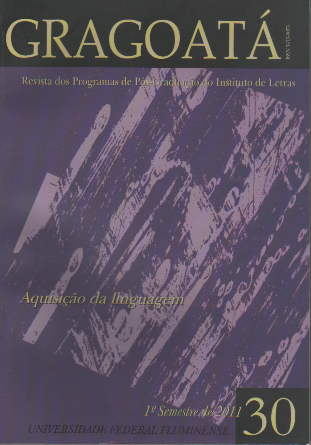The acquisition of cleavage in Peninsular Spanish
DOI:
https://doi.org/10.22409/gragoata.v16i30.32929Keywords:
Cleavage, Variation in Spanish, European Spanish syntax.Abstract
Considering the variation of cleavage in current Spanish, this paper aims at investigating how Spanish children acquire these constructions. The main question in this text is whether Spanish children initially produce constructions which do not exist in the adult European variety and then they lose them or if those children never produce these constructions. 18 children between 2 and 10 years (2 children for each age group) from the CHILDES corpus were analyzed. The data showed that children produce constructions which do not exist in the adult grammar, being one of those constructions only present on a 3 year old child and the another remains at all ages. The interpretation of the data is that there is not, at first, a problem of language acquisition, but variation in Spanish because the constructions are considered to be nonexistent in many studies in the speech of adults interacting with children.Downloads
Downloads
Published
How to Cite
Issue
Section
License
Authors who publish in Gragoatá agree to the following terms:
The authors retain the rights and give the journal the right to the first publication, simultaneously subject to a Creative Commons license CC-BY-NC 4.0, which allows sharing by third parties with due mention to the author and the first publication by Gragoatá.
Authors may enter into additional and separate contractual arrangements for the non-exclusive distribution of the published version of the work (for example, posting it in an institutional repository or publishing it in a book), with recognition of its initial publication in Gragoatá.

Gragoatá is licensed under a Creative Commons - Attribution-NonCommercial 4.0 International.














